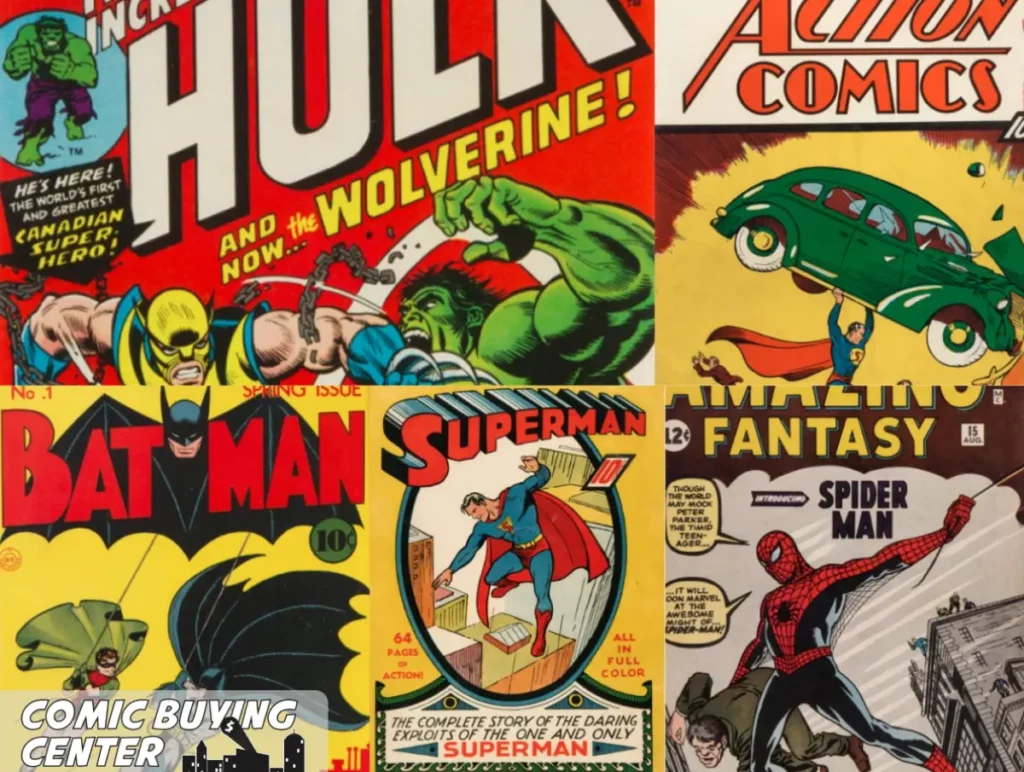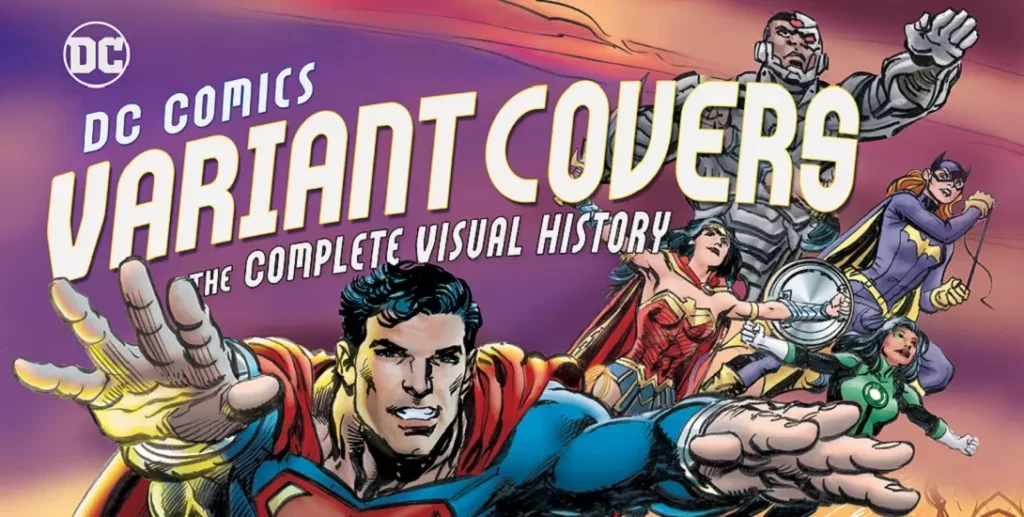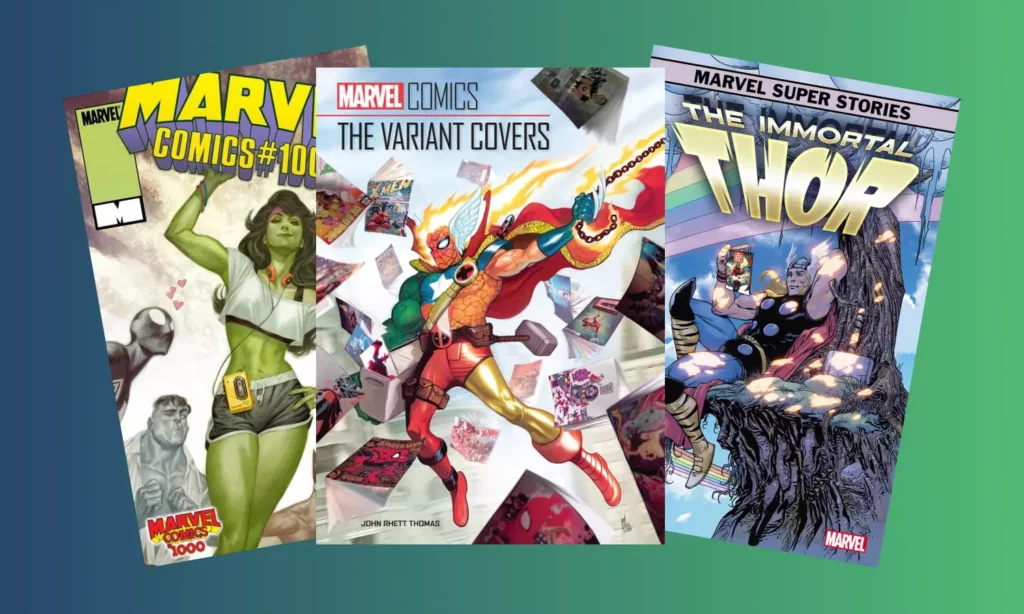The article will delve into the significance of iconic comic book covers, exploring how they influence the valuation of comic books. It will discuss factors such as rarity, historical significance, and cultural impact, while showcasing notable examples of iconic covers and analyzing their influence on collector demand and market value.
The Impact of Cover Design
Comic book covers play a big role in determining the value of a comic book. A striking cover can catch someone’s eye and make the comic more memorable and desirable. Some of the most iconic comic book covers, like those that feature major events or introduce new characters, often become famous comic covers and are really popular for collectors.
These iconic comic covers can significantly increase a comic’s value, especially if they are rare or in good condition. Additionally, comic book covers that are well-known for their artistic quality or historical importance are more likely to be treasured by fans and collectors. As a result, when a comic book has a cover that stands out either for its art or its significance in the story, it can become more valuable in the market.
What Are Comic Book Variant Covers and Their Origins?
Variant covers in comic books are alternative designs for the usual cover of a comic issue, often created to celebrate special events or to attract collectors. The concept of variant covers, or variant comics, started becoming popular in the 1980s and 1990s as a way for publishers to boost sales and create a buzz around new releases. These comic book variant covers can feature different artwork from the standard edition, sometimes done by guest artists or portraying alternate story scenarios.
The idea was to offer something unique and collectible that wasn’t available with the standard issue. As a result, these variant covers quickly became popular among collectors who were eager to get their hands on these limited editions. Today, variant covers are a common part of comic book publishing, with fans often looking forward to the unique art and creativity they bring.
The Golden Age of Comic Book Covers
The Golden Age of comic books, spanning from the late 1930s to the mid-1950s, produced some of the most famous comic book covers that have become highly valued by collectors. These covers are known for their bold colors, dramatic portrayals, and introduction of iconic characters.
One notable cover from this era is “Action Comics #1,” which marks the first appearance of Superman, making it one of the most recognized and expensive covers. Similarly, “Detective Comics #27” introduced Batman, adding to the list of valuable covers from the Golden Age.
Other significant covers include “Contact Comics #12,” featuring work by L.B. Cole, known for its eye-catching design, and “Mask Comics #1,” another Cole cover that is highly prized for its unique artistic style.
The Silver Age and Beyond
The Silver Age of comic books, which lasted from the late 1950s to the early 1970s, featured some of the great comic book covers that are now iconic among collectors. For example, “Fantastic Four #25” (1964) by Jack Kirby, presents a memorable battle between Hulk and Thing, one of the definitive moments of Marvel’s Silver Age. Another notable cover is “Silver Surfer #4” (1969) by John Buscema, known for its simplicity and powerful battle between the Silver Surfer against Thor, making it one of the most revered covers of that era.
The Modern Era of Cover Design
In the modern era of comic book cover design, there’s a wide range of styles and themes, more than ever before. For example, the cover of “Batman #96” by Guillem March and “Dark Nights Death Metal #1” by Doug Mahnke are notable for their dynamic and striking visual elements. Similarly, “The Amazing Spider-Man Daily Bugle #3” by Rahzzah features an engaging design. These examples show us the ongoing evolution and creativity in variant comic covers art, showcasing the talents of artists in capturing readers’ attention and conveying the mood of the comic.
What Makes Variant Covers Popular and Valuable?
Here are a few reasons why:
- Scarcity. Variant covers are often produced in limited quantities, making them way rarer than regular issues.
- Artwork. They frequently feature artwork by renowned or up-and-coming artists, sometimes with radically different styles or interpretations.
- Themes. Variants may showcase significant events, crossovers, or anniversaries, adding to their collectible status.
- Investment. Collectors view rare variants as potential investments that can increase in value over time.
- Fan Appeal. They appeal to fans who want something different or more exclusive than what is available to the general public.
These factors combine to make variant covers highly valuable, both sentimentally and monetary.
What Do Variant Covers Do To Value?
Variant covers can significantly impact the value of comic books in a few ways. Firstly, they attract collectors looking for unique or rare editions, which are highly valuable simply because they are rare and unique, what an unexpected turn here. Variant covers also often feature exclusive artwork or special events, making them even more appealing to both hardcore fans and casual readers.
This increased interest can boost sales numbers for comic books, as enthusiasts and collectors are often willing to pay a premium for these special editions. Essentially, variant covers not only sell comic books by boosting their collectibility and aesthetic appeal but also contribute to their monetary worth – all at once.




